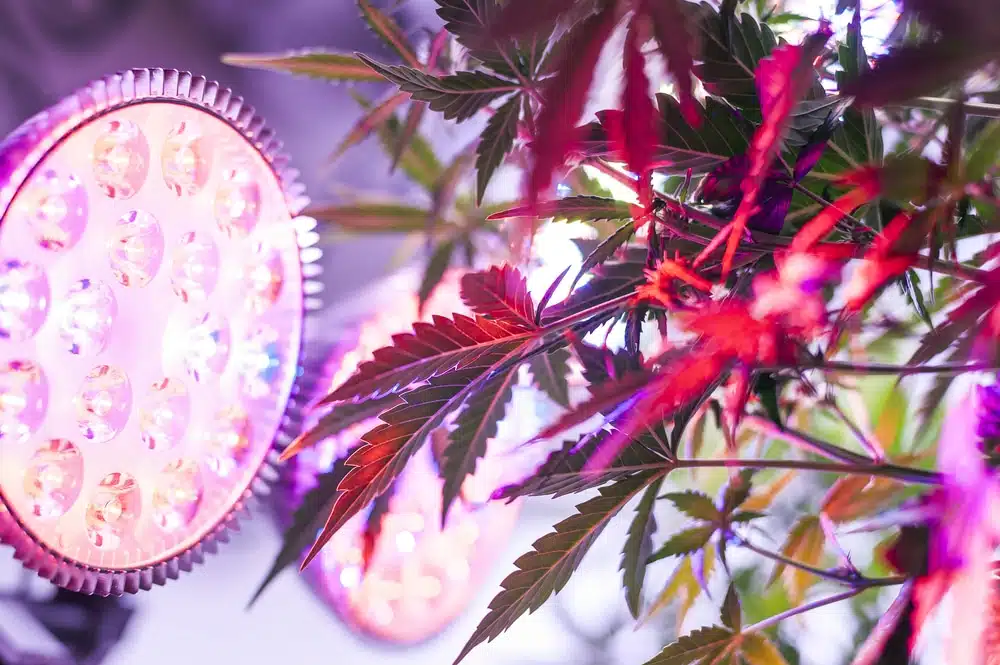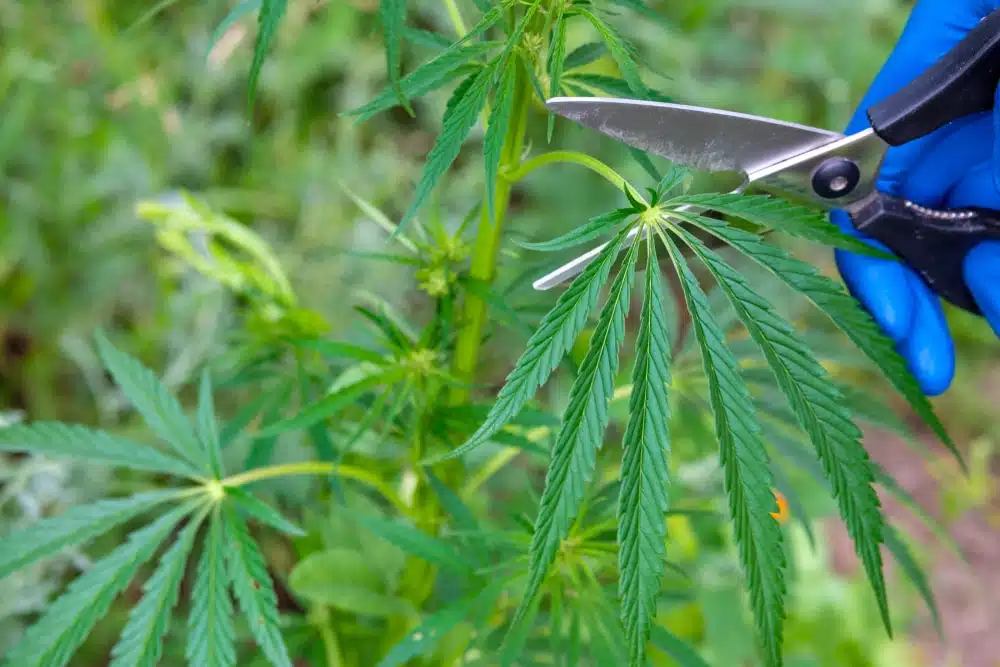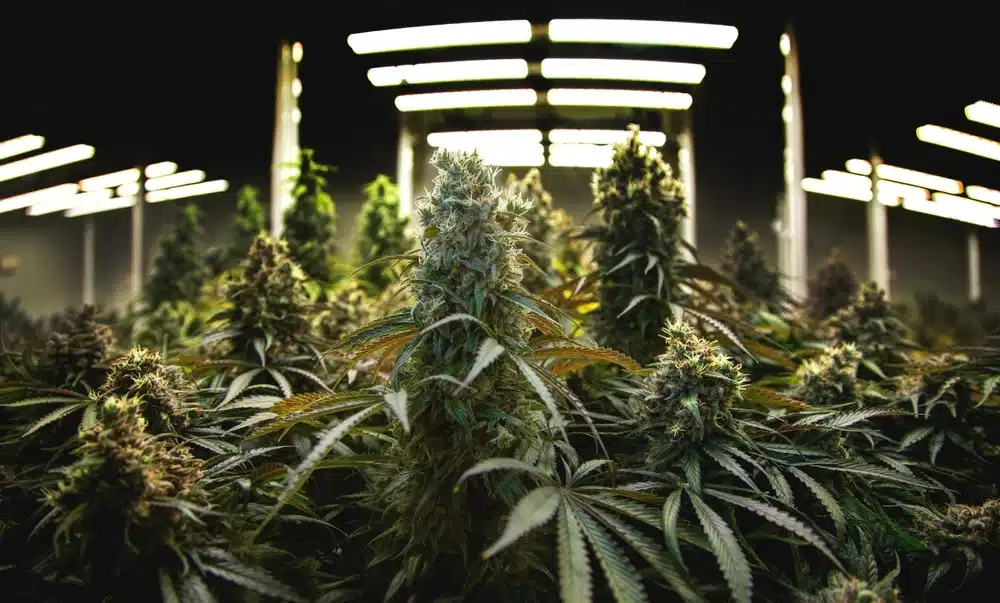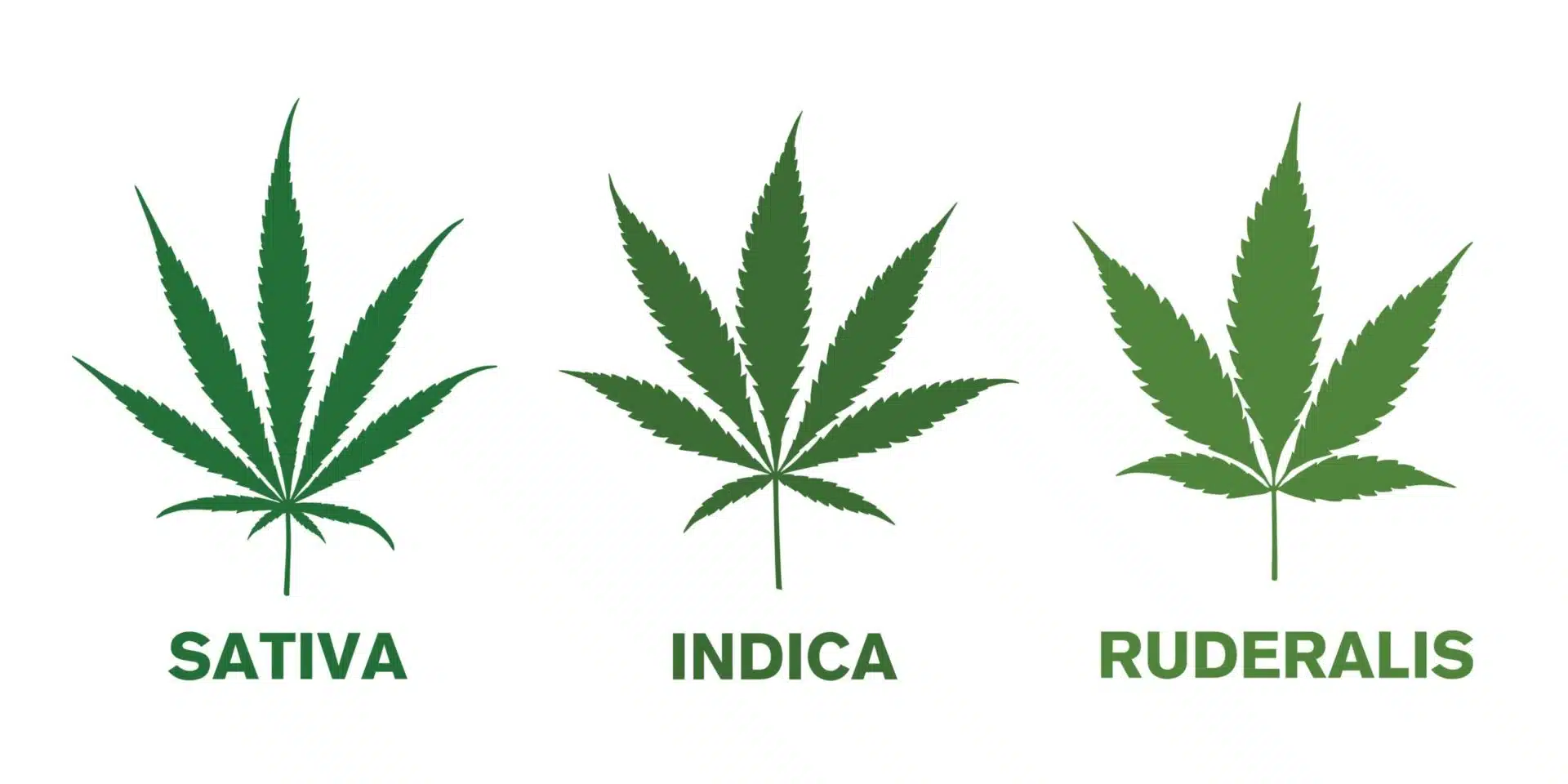Temperature to Grow Marijuana
Are you curious about the best temperature to grow marijuana? Our guide provides comprehensive knowledge for cultivators seeking a perfect harvest.
Temperature is a key factor in growing cannabis. It influences all aspects of a plant’s development. Ensuring your crop doesn’t get too hot or cold is essential for success.
Ready to master environmental conditions and grow quality cannabis? Join us to discover the significant influence of temperature and how to optimize it.
The role of temperature in cannabis cultivation
Understanding the role of temperature when you grow marijuana is crucial. This environmental factor affects almost all aspects of a plant’s development.
Seeds need ideal conditions to germinate and survive as seedlings. Cannabis crops thrive in specific temperature ranges as they develop. Exposing plants to excessive heat or cold can negatively affect growth.
Temperature plays a significant role in storing seeds and curing buds properly. Correct heat is also a key factor in drying fresh cannabis.
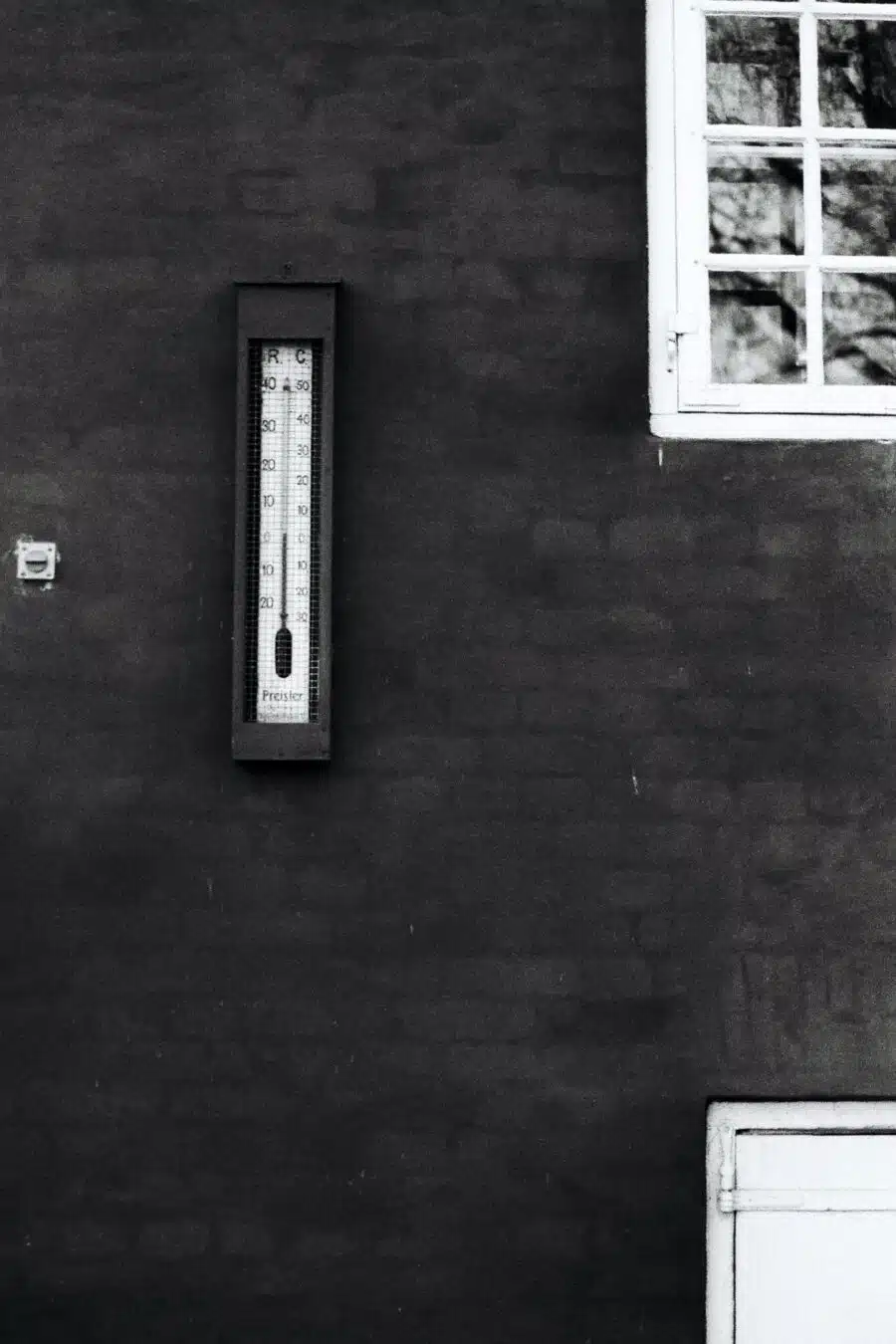
The impact of temperature on cannabis growth
The significant impacts of temperature on cannabis growth include:
- Survival: Photosynthesis is how plants convert light into energy. It’s fundamental for the development of cannabis. High temperatures increase the rate of this process, while the cold slows it down.
- Health: Temperatures influence other environmental factors, like humidity. These conditions affect the overall well-being of plants.
- Quantity and quality: Temperature impacts bud development and yield. It also affects potency and flavor.
Why accurate temperature control is essential
It’s crucial to maintain accurate control over temperature when you grow marijuana. Plants prefer consistent conditions and respond negatively when environmental factors fluctuate.
Accurate temperature control helps growers to avoid problems. Maintaining the correct range maximizes a marijuana plant’s potential.
Understanding the ideal temperatures to grow marijuana
Most plants thrive in warm, dry conditions. The best temperature to grow marijuana is generally consistent. There are also other variables to consider:
- Age: The best temperatures for cannabis differ for each growth stage. Plants thrive in specific heat levels during vegetation and flowering.
- Genetics: There are thousands of unique marijuana strains. Each variety prefers slightly different temperatures. Some enjoy hot climates, while others thrive in cooler conditions.
- Night and day: Cannabis plants typically need warmer temperatures when receiving light. They prefer slightly colder conditions during hours of darkness.
Ideal temperature ranges for cannabis
An ideal temperature to grow marijuana is around 68–85⁰F during light hours. Optimal ranges change as plants develop. Let’s discuss the best conditions for the two primary marijuana growth stages.
Optimal temperatures for vegetative growth
The optimal temperature during vegetation is around 68–85⁰F. Plants prefer 65–80⁰F during dark hours.
Best temperatures for the flowering stage
Cannabis plants enjoy cooler temperatures during the flowering stage. A good range is 65–80⁰F with lights on. Many growers aim for a 10⁰F drop during dark hours.
The impact of temperature fluctuations on cannabis
Temperature fluctuations can have significant consequences for cannabis. Let’s look at the effects of extreme hot and cold changes on plants.
The effects of excessively high temperatures on cannabis
An overly high temperature when you grow marijuana can cause significant issues. Exposing plants to heat stress can cause these problems:
- Wilting: Foliage suffers when temperatures get too hot. Curling or drooping cannabis leaves are a consequence of excessive heat.
- Stunted growth: Extremely high temperatures negatively impact a cannabis plant’s nutrient uptake. Water evaporates too fast, and the crops stop growing if they can’t feed.
- Scorched foliage: Heat stress can dehydrate and burn leaf tissue. This problem also affects a plant’s general health and development.
- Discoloration: Excessively high temperatures often cause yellowing or dark brown spots on foliage. These symptoms on leaves may also indicate potential diseases.
- Flower development: Unsuitable temperatures impact bud production and can prevent them from forming. Heat stress damages trichomes, cannabinoids, and terpenes. This condition affects the overall quality if you don’t fix it.
Heat stress is a common concern regarding temperature when you grow marijuana. Learning how to fix and prevent the problem is essential for cultivators.
The consequences for cannabis when temperatures are too cold
Plants also have adverse reactions when temperatures are too cold. Let’s look at the impacts of chilly conditions on cannabis:
- Growth: When temperatures get too cold, a plant’s metabolism slows. This reaction hinders development and can even halt it entirely.
- Feeding problems: Extremely cold temperatures impact the root system’s ability to function. This occurrence prevents nutrient uptake and healthy plant development.
- Flower production: Exposing cannabis to excessive cold affects the buds. A low temperature reduces the size of colas and the yield.
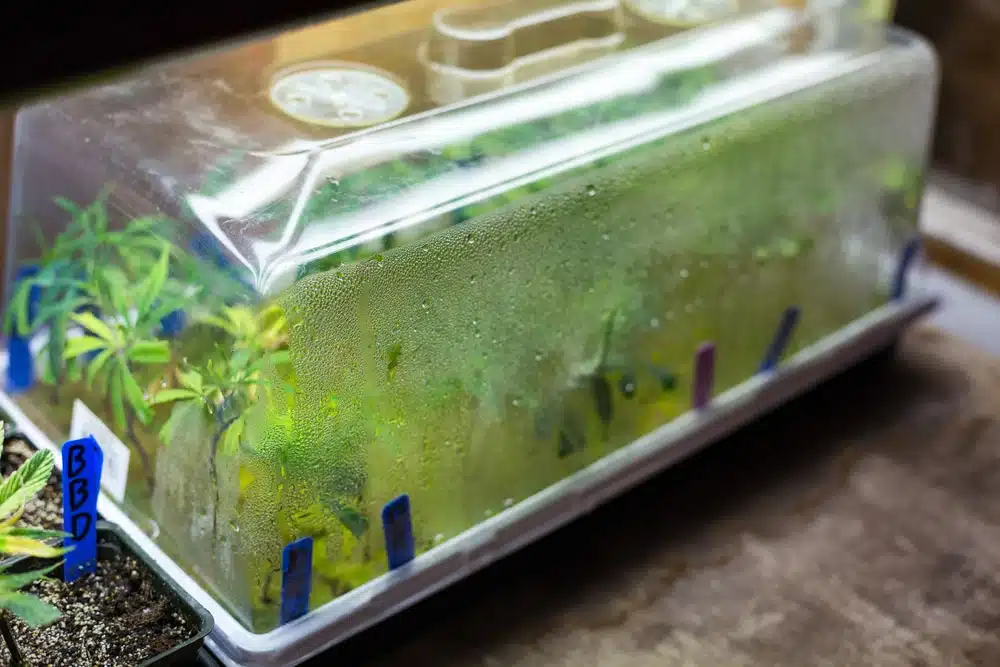
Monitoring and controlling temperature to grow marijuana under optimal conditions
Controlling the temperature to grow marijuana is crucial. Managing this factor increases the chance of a high-quality harvest.
Tools for temperature control in cannabis cultivation
There are excellent tools and equipment for managing temperature. These devices help cultivators to optimize conditions for cannabis plants.
Thermometers and thermostats
Thermometers are devices that show the temperature in an area. They’re essential for monitoring your grow space.
Thermostats connect to a heating system and help to regulate temperatures. Install them in your grow room or tent to keep the conditions ideal.
Climate control equipment for indoor grows
You can optimize all aspects of your setup using different equipment. Various climate control products exist to help you achieve optimal conditions. Some recommended ones include:
- Circulation fans for managing temperatures and improving airflow
- Lighting systems that replicate sunshine and provide heat
- Extraction and intake fans for increasing ventilation and fresh air
- Digital controllers that monitor and regulate conditions automatically
Install these devices in your grow room to replicate the perfect environment for cannabis development.
Managing temperature in different growing environments
Managing temperature can be challenging in some environments. Below are tricks and tips for growing in different areas.
Temperature control for indoor grows
It’s much easier to manage temperature when you grow marijuana indoors. The available equipment for controlling conditions is more than it was decades ago.
Financial aspects are worth noting. An optimal indoor setup is expensive to assemble and sustain. The rewards of big yields and premium buds justify the costs. Cannabis cultivation is a long-term and worthwhile investment that offers many benefits.
Dealing with temperature challenges in outdoor grows
Outdoor cultivation can present unique challenges. Growers often deal with environmental issues outside of their control.
Regions like California and the Mediterranean provide ideal climates for cannabis growth. Optimal areas are still subject to sudden changes in weather.
Choosing the best seeds is essential for successful results. Many varieties can handle the changes in temperature when you grow marijuana outdoors.
Autoflower strains are ideal for harsher climates. They’re fast-growing and resilient against pests, diseases, and unpredictable weather. These varieties develop according to time rather than light cycles. It’s possible to cultivate them in any season.
Growing plants in a greenhouse or polytunnel is a popular method. These setups provide excellent protection from natural yet harmful elements.
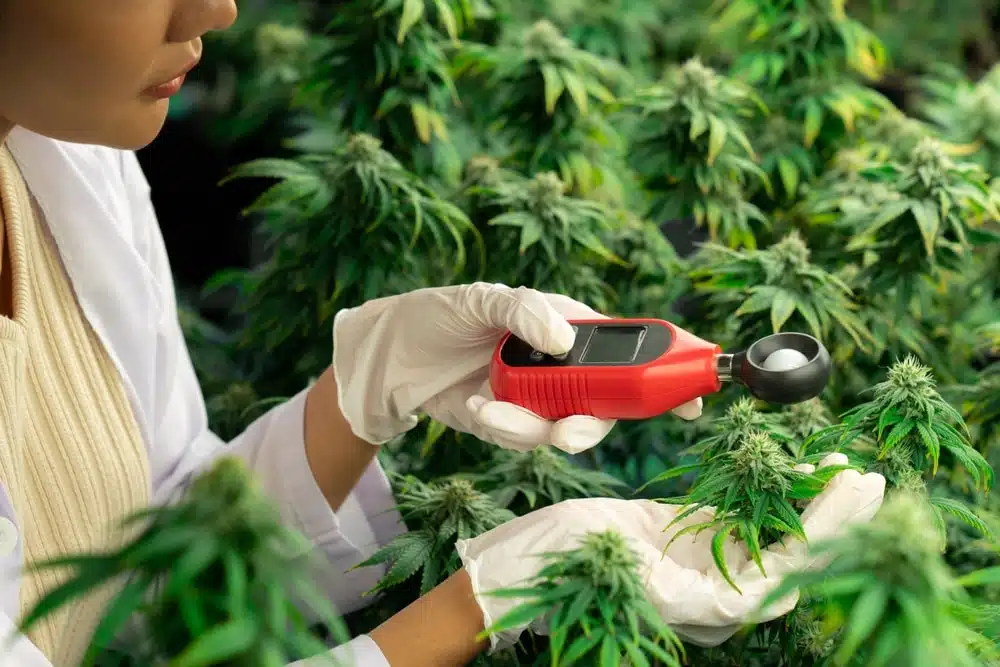
The interplay between temperature, humidity, and light
Cannabis cultivation requires a balance of precise temperature, humidity, and light levels. These three factors work in symbiosis to produce outstanding results.
Light creates heat, and the temperature influences humidity in an area. Understanding this relationship is essential for successful marijuana cultivation.
The relationship between temperature and humidity in cannabis cultivation
Maintaining the right balance between humidity and temperature to grow marijuana is crucial. Too much moisture and heat in the air can cause problems for plants.
Understanding VPD (vapor pressure deficit) and its importance
Vapor pressure deficit (VPD) is similar to relative humidity. They both relate to the amount of moisture in the air.
VPD measures saturation in the environment independent of temperature. It offers more accurate predictions of water loss and plant transpiration than relative humidity.
Balancing temperature and humidity for optimal growth
Cannabis plants thrive with the correct balance of humidity and temperature. The two interact closely, as warm air holds more water.
Too much moisture increases the risk of mold, pests, and disease. An ideal setup involves maintaining humidity levels with cool air. The ranges depend on different growth stages.
Seedlings prefer warm temperatures and relative humidity of 65–70%. Reduce levels by 5% each week of the vegetation stage and settle at 45–65% in the last weeks before bloom.
Drop humidity to around 40–50% when plants begin flowering. Follow these guidelines and maintain the correct temperatures for optimal growth.
How light levels affect grow room temperatures
Light levels often dictate the temperature when you grow marijuana indoors. Their impact depends on the type of system you use.
The impact of different lighting systems on temperature
High-pressure sodium (HPS) lights can generate a lot of heat. They typically range from 250W to 600W lamps. These systems can dramatically increase the temperature of your grow room.
LED lighting systems produce much less heat than HPS lamps. They require minimal electricity and also reduce the costs of indoor growing.
Managing heat from grow lights
Powerful HPS lights can cause temperatures to get too high. The best way to manage excessive heat is with circulation, extraction, and intake fans. This equipment draws fresh air inside and cools the grow room.
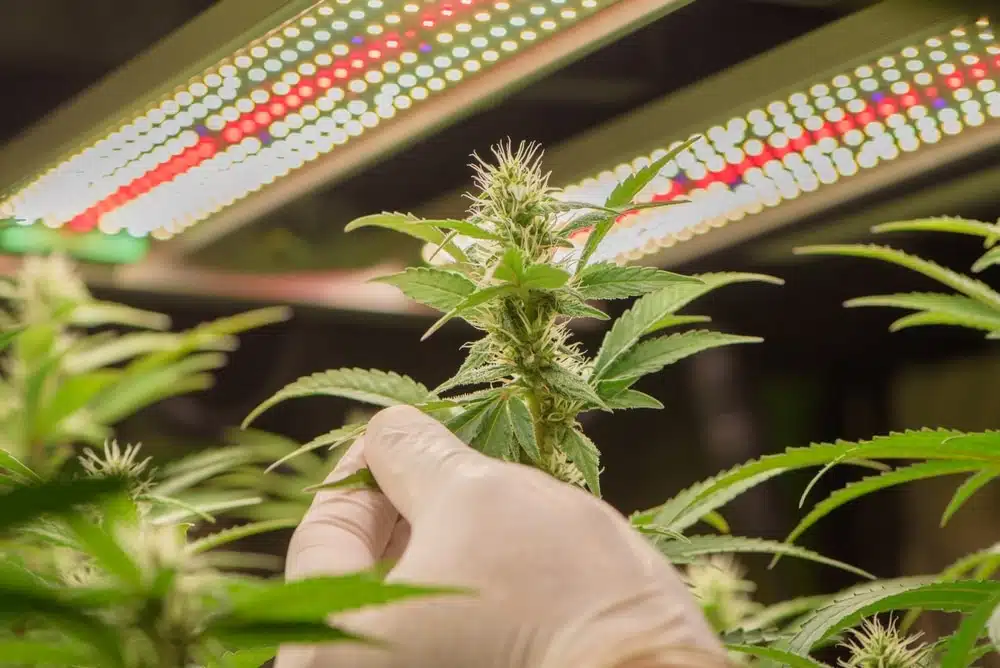
Advanced temperature considerations for cannabis cultivation
There are deeper considerations around temperature when you grow marijuana. Heat affects micro aspects of plant development in fascinating ways.
The effects of temperature on cannabis potency and flavor
The influence of temperature on cannabis quality is profound. Let’s explore how hot and cold conditions affect a plant’s potency and flavor.
How temperature affects terpene and cannabinoid production
Temperature significantly affects cannabinoid and terpene production. Suitable heat levels and healthy growth enhance the development of these compounds.
Exposure to extreme hot or cold conditions can reduce cannabinoid production. Harsh temperatures can also alter a plant’s terpene profile. These issues lead to lower-quality buds with less flavor.
The influence of cold temperatures on color and flavor development
Cold conditions can alter the color and flavor of cannabis. Reducing the temperature during the final weeks of flowering can enhance buds.
Many strains retain more terpenes in lower temperatures. Cooler conditions also promote vibrant colors of purple, blue, and red.
Unique temperature techniques for enhanced growth
There are unique techniques that utilize temperature to grow marijuana with enhanced results. Cold exposure can cause minor shock for plants. This practice promotes further trichome and cannabinoid development as a defense mechanism.
Nighttime temperature drops for boosting yields
Reducing the temperature when plants are in darkness is generally advisable. Nighttime drops in the final weeks can boost yields.
Many cultivators lower temperatures by 10⁰F, but ensure you don’t let it get too cold. Levels below 60⁰F can damage cannabis plants.
The benefits of warm roots and cool canopies
Ensure your plant’s roots are warm to optimize their functionality. They operate best at around 77⁰ F. Maintaining these conditions improves crop development.
Cool canopies can keep cannabis plants happy when the sunlight gets too hot. These covers provide excellent protection for crops during heat waves.
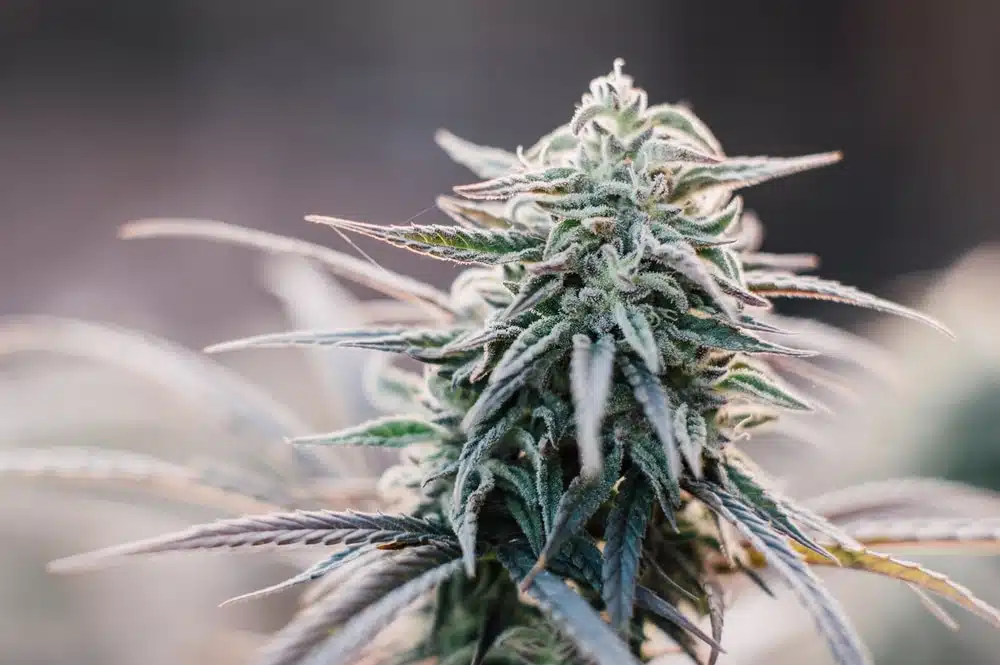
Optimal temperatures = happy marijuana plants
There are many areas of optimizing cannabis cultivation, from pH to nutrient supply. Every effort is redundant if people ignore the temperature when they grow marijuana.
The importance of temperature management in cannabis cultivation
Managing temperature is among the most important factors in cultivation. Controlling heat can be challenging, but the rewards are gratifying.
Recognizing temperature as a key factor in successful growing
Recognizing the significance of temperature is essential for successful cultivation. Pay attention to the heat and reap supreme weed.
The rewards of effective temperature control in cannabis cultivation
Controlling temperature when you grow marijuana improves all aspects of a plant. Meet your crop’s needs and expect top-shelf flavor, effects, and yield.
Additional resources on temperature management in cannabis growing
The advancements in cannabis cultivation mean there’s always something new to learn. As the plant’s popularity rises, available information increases.
Recommended guides and tutorials
There are many famous grow books like Cannabis Grower’s Handbook and The Cannabis Grow Bible. These provide great tips and guides.
Online sources offer specific information on any aspect of cultivation. Platforms like YouTube have an endless supply of tutorials.
Online communities for ongoing learning and support
There are excellent forums on sites like Reddit or Grasscity. The increasing rise in legal weed allows people to speak openly. These online communities are fantastic for learning from other weed enthusiasts.
Why not put your knowledge to use? Check out our store, find the best seeds, and start cultivating today.

